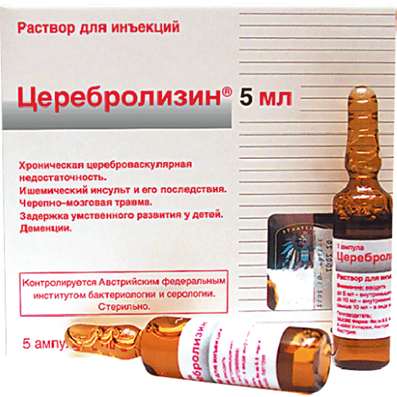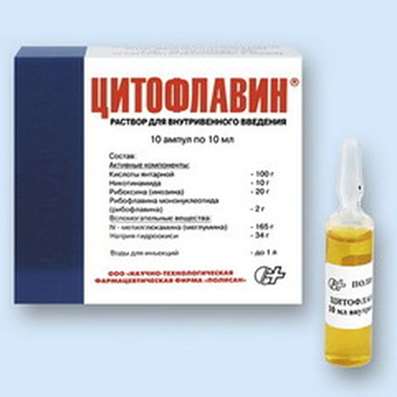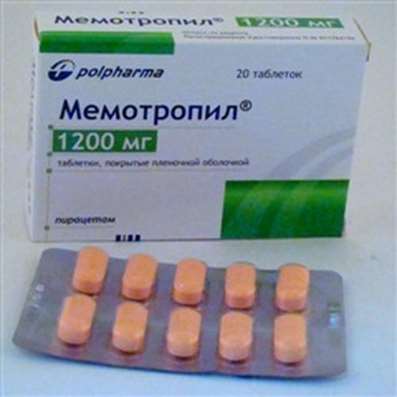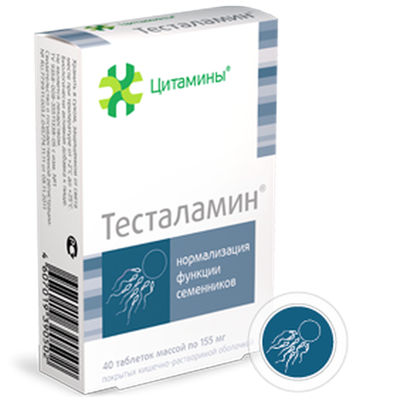Instruction for use: Amlodipine 5mg
I want this, give me price
International Nonproprietary Name (INN): Amlodipine
Pharmaceutic group: Hypotensive
Presentation: Tablets 5 mg ¹30 or 10 mg ¹30.
Available with prescription
Indications for Amlodipine
Amlodipine is in a group of drugs called calcium channel blockers. Amlodipine relaxes (widens) blood vessels and improves blood flow. Amlodipine is a dihydropyridine calcium antagonist (calcium ion antagonist or calcium slow-channel blocker) that inhibits the transmembrane influx of calcium ions into vascular smooth muscle and cardiac muscle.
Amlodipine is used to treat high blood pressure (hypertension) or chest pain (angina) and other conditions caused by coronary artery disease. This medication is for use mainly in adults (above 18 years). Amlodipine may also be used for other purposes not listed in this medication guide.
The metabolism and excretion of Amlodipine have been studied in healthy volunteers following oral administration of 14C-labelled drug. Amlodipine is well absorbed by the oral route with a mean oral bioavailability of approximately 60%. Renal elimination is the major route of excretion with about 60% of an administered dose recovered in urine, largely as inactive pyridine metabolites. Amlodipine concentrations in plasma declined with a mean half-life of 33 h, while elimination of total drug-related material from plasma was slower.
Important information about amlodipine
Before taking amlodipine, tell your doctor if you have congestive heart failure or liver disease.
Drinking alcohol can further lower your blood pressure and may increase certain side effects of amlodipine.
If you are being treated for high blood pressure, keep using amlodipine even if you feel well. High blood pressure often has no symptoms. You may need to use blood pressure medication for the rest of your life.
Amlodipine is only part of a complete program of treatment that may also include diet, exercise, weight control, and other medications. Follow your diet, medication, and exercise routines very closely.
Tell your doctor about all other heart or blood pressure medications you are taking.
Your chest pain may become worse when you first start taking amlodipine or when your dose is increased. Call your doctor if your chest pain is severe or ongoing.
You should not take this medication if you are allergic to amlodipine.
To make sure you can safely take amlodipine, tell your doctor if you have any of these other conditions:
•a heart valve problem called aortic stenosis;
•congestive heart failure; or
•liver disease.
If you are also taking a beta-blocker drug (such as Betapace, Blocadren, Corgard, Coreg, Inderal, InnoPran, Lopressor, Normodyne, Tenoretic, Tenormin, Toprol, Trandate, Zebeta, and others) do not suddenly stop using the beta-blocker without first talking to your doctor. You may need to use less and less before you stop the medication completely. Stopping a beta-blocker too quickly can cause serious heart problems that will not be prevented by amlodipine.
FDA pregnancy category C. It is not known whether amlodipine will harm an unborn baby. Tell your doctor if you are pregnant or plan to become pregnant while using this medication. It is not known whether amlodipine passes into breast milk or if it could harm a nursing baby. You should not breast-feed while you are taking amlodipine.
Trade name of the drug – Amlodipine
Dosage Form: tablets
Chemical rational name: 3- (10,11-dihydro-5H-dibenz [a, d] cyclohepten-5-ylidene) -N, N-dimethylpropan-1-amine hydrochloride
Active substance:
amlodipine besylate - 6.9 mg and 13.8 mg, which corresponds to 5 mg amlodipine and 10 mg;
Excipients: lactose monohydrate - 85.7 / 171.4 mg, povidone - 3.2 / 6.4 mg, Valium - 3.2 / 6.4 mg, calcium stearate - 1.0 / 2.0 mg.
Description:
Tablets white or white with a cream shade, flat-cylindrical, with a facet.
Pharmacotherapeutic group: blocker "slow" calcium channels
ATX code: C08CA01
Pharmacological Properties of AmlodipinePharmacodynamics
Dihydropyridine derivative - blocker "slow" calcium channels (BCCI) II generation, has antianginal and hypotensive action. Communicating with the dihydropyridine receptor, blocks calcium channels reduces the transmembrane passage of calcium ions into the cell (mainly in vascular smooth muscle cells than cardiac myocytes).
Antianginal effect is due to the expansion of the coronary and peripheral arteries and arterioles: angina reduces the severity of myocardial ischemia; expanding peripheral arterioles, reducing the total peripheral vascular resistance (SVR), reduces preload on the heart, reducing myocardial oxygen demand. Extends the main coronary arteries and arterioles in the unaltered and ischemic myocardial areas, increases the supply of oxygen to the myocardium (especially in vasospastic angina); It prevents the development of coronary artery spasm (including those caused by smoking). In patients with stable angina single daily dose increases exercise tolerance, slows the development of angina and 'ischemic »ST-segment depression, reduces the frequency of angina attacks and consumption of nitroglycerin and other nitrates.
It has a long dose-dependent hypotensive effect. The antihypertensive effect is due to the direct vasodilating effect on vascular smooth muscle. When hypertension single dose provides a clinically significant reduction in blood pressure (BP) for 24 hours (in the position of the patient "lying" and "standing"). Orthostatic hypotension in the appointment of amlodipine is quite rare. It does not cause a decrease in exercise tolerance, left ventricular ejection fraction. It reduces the degree of left ventricular hypertrophy, has anti-atherosclerotic and cardioprotective effect in ischemic heart disease (IHD). No effect on myocardial contractility and conductivity, does not cause reflex increase in heart rate (HR), inhibits platelet aggregation, increases glomerular filtration rate, has a weak natriuretic effect. In diabetic nephropathy does not increase the severity of microalbuminuria. It does not have any adverse effect on the metabolism and the concentration of plasma lipids and can be used in the treatment of patients with asthma, diabetes and gout. Significant blood pressure reduction is observed in 6-10 hours, the duration of effect of 24 hours. When long-term therapy the maximum reduction in blood pressure occurs within 6-12 hours after ingestion of amlodipine inside. If, after prolonged treatment with amlodipine cancel effectively reduce blood pressure is maintained for 48 hours after the last dose. Then BP indicators are gradually returning to baseline within 5-6 days.
Pharmacokinetics
After oral amlodipine slowly absorbed from the gastrointestinal tract (GIT). The mean absolute bioavailability of 64%, the maximum concentration (Cmax) in blood serum is observed after 6-9 hours. Equilibrium plasma concentrations (CSS) are achieved after 7-8 days of therapy. Ingestion of amlodipine does not affect the absorption.
The mean volume of distribution of 21 l / kg body weight, indicating that most of the drug is in the tissues and relatively smaller - in the blood. Most of the drug present in the blood (95%), bind to plasma proteins.
Amlodipine undergoes slow but active metabolism in the liver in the absence of a significant effect of "first pass". Metabolites not possess significant pharmacological activity.
After a single oral half-life (T1 / 2) ranges from 31 to 48 hours when re-assignment of T1 / 2 of approximately 45 hours. About 60% of an oral dose is excreted mainly by the kidneys as metabolites, 10% - unchanged, and 20-25% - through the intestines, and in breast milk. Amlodipine Total clearance is 0.116 ml / sec / kg (7 ml / min / kg and 0.42 L / h / kg).
In elderly patients (65 years) amlodipine delayed excretion (T1 / 2 - 65 hr.) Compared to younger patients, but the difference has no clinical significance. Elongation T1 / 2 in patients with liver disease suggests that long-term administration with drug accumulation in the body is higher (T1 / 2 - 60 h). Renal failure has no significant effect on the kinetics of amlodipine. The drug crosses the blood-brain barrier. When hemodialysis is not removed.
Indications for Amlodipine
Arterial hypertension (monotherapy or in combination with other antihypertensive agents).
Stable angina and vasospastic angina (Prinzmetal angina) (monotherapy or in combination with other antihypertensive agents).
Contraindications for Amlodipine
Hypersensitivity to amlodipine, dihydropyridine derivatives and other ingredients;
severe hypotension (blood pressure cistolicheskoe less than 90 mm Hg);
collapse, cardiogenic shock;
unstable angina (except Prinzmetal's angina);
clinically significant aortic stenosis;
pregnancy and lactation;
age of 18 years (effectiveness and safety have been studied);
lactase deficiency, lactose intolerance, glucose-galactose malabsorption.
Precautions: hepatic dysfunction, sick sinus syndrome (SSS) (bradycardia, tachycardia), chronic heart failure, non-ischemic etiology III-IV NYHA functional class classification, hypotension, aortic stenosis, mitral stenosis, hypertrophic obstructive cardiomyopathy ( GOKMP), acute myocardial infarction (and for 1 month after myocardial infarction), in old age.
Pregnancy and lactation
There was no evidence of teratogenicity amlodipine in animal studies, but there is no clinical experience with its use during pregnancy and lactation. Therefore amlodipine should not be given to pregnant women and during lactation, as well as women of childbearing age, if they are not using reliable methods of contraception.
Amlodipine Dosage and Administration
Inside, the initial dose for the treatment of hypertension and angina is 5 mg once daily. The maximum daily dose - 10 mg once daily.
When hypertension maintenance dose may be 2.5 - 5 mg (2.1 mg tablet 5 - 1 5 mg tablet) daily.
When angina and vasospastic angina - 5-10 mg per day, once. In order to prevent angina attacks - 10 mg / day.
Patients with abnormal liver function as antihypertensive Amlodipine administered with care, at an initial dose of 2.5 mg (2.1 to 5 mg tablets), as anti-anginal agents - 5 mg.
Elderly patients may increase the T1 / 2 and amlodipine decrease in creatinine clearance (CC). Changes in dose is not required, but must be more careful monitoring of patients.
Do not you want to change the dose while the appointment with thiazide diuretics, beta-blockers and angiotensin-converting enzyme (ACE).
Not required dose modification in patients with renal insufficiency.
Side effect ofAmlodipine
Classification of the incidence of side effects of the World Health Organization (WHO):
often> 1/10
often by> 1/100 to <1/10
sometimes by> 1/1000 to <1/100
rarely from> 1/10000 to <1/1000
very rarely from <1/10000, including isolated reports.
Since the cardiovascular system: often - heartbeat, peripheral edema (swelling of the ankles and feet), "tides" of blood to the skin of the face; sometimes - excessive reduction of blood pressure; very rarely - syncope, dyspnoea, vasculitis, orthostatic hypotension, development or exacerbation of congestive heart failure, cardiac arrhythmias (including bradycardia, ventricular tachycardia and atrial fibrillation), heart attack, chest pain.
On the part of the central and peripheral nervous system: often - headache, dizziness, fatigue, drowsiness; sometimes - asthenia, malaise, hypoesthesia, paresthesia, peripheral neuropathy, tremor, insomnia, mood lability, abnormal dreams, anxiety, depression, anxiety, very rarely - headache, increased sweating, lethargy.
From the digestive system: often - nausea, stomach pain; sometimes - vomiting, constipation or diarrhea, flatulence, dyspepsia, anorexia, dry mouth, thirst;
rarely - gingival hyperplasia, increased appetite; very rarely - pancreatitis, gastritis, jaundice (caused by cholestasis), hyperbilirubinemia, increased activity of "liver" transaminases, hepatitis.
From the side of hematopoiesis: rarely - thrombocytopenic purpura, leukopenia, thrombocytopenia.
With the genitourinary system: sometimes - frequent urination, painful urination, nocturia, impotence, rarely - dysuria, polyuria, gynecomastia.
With the respiratory system: sometimes - shortness of breath, rhinitis, very rarely - cough.
For the skin: rarely - dermatitis, it is very rare - alopecia, dermatoxerasia, "cold" sweat violation of skin pigmentation.
Allergic reactions: itching, rash (including erythematous, maculopapular rash, urticaria), angioedema, erythema multiforme.
From the musculoskeletal system: sometimes - muscle cramps, myalgia, arthralgia, back pain, arthritis, rarely - myasthenia gravis.
Other: sometimes - tinnitus, diplopia, disturbance of accommodation, xerophthalmia, conjunctivitis, eye pain, fever, epistaxis, very rarely - parosmiya, hyperglycemia.
overdose
Symptoms: excessive peripheral vasodilatation and possibly svyrazhennym prolonged decrease in blood pressure, collapse, shock.
Treatment: gastric lavage, the appointment of activated carbon, the maintenance function of the cardiovascular system, the control parameters of the heart and lung function, elevated above the level of the head, the position of the lower extremities, control of blood volume and diuresis. To restore vascular tone - use of a vasoconstrictor (in the absence of contraindications to their use); in order to eliminate the effects of calcium channel blockade - intravenous calcium gluconate. Hemodialysis is ineffective.
Interaction
Amlodipine can be used safely in the treatment of hypertension with thiazide diuretics, alpha-blockers, beta-blockers or ACE inhibitors. Patients with stable angina pectoris drug can be combined with other antianginal drugs, such as long-acting nitrates, beta-blockers or short-acting nitrates.
Amlodipine can be used simultaneously with nonsteroidal anti-inflammatory drugs (NSAIDs) (especially indomethacin), antibacterial agents and hypoglycemic agents for oral administration.
Perhaps strengthening anti-anginal and anti-hypertensive action BCCI when combined with thiazide and "loop" diuretics, verapamil, ACE inhibitors, beta-blockers and nitrates, as well as strengthening their hypotensive effect when combined with alpha 1-blockers, neuroleptics.
Although the study of amlodipine negative inotropic action is not usually observed, however, some BCCI may increase the severity of the negative inotropic effects of antiarrhythmic agents causing the lengthening of the interval QT (e.g., amiodarone and quinidine).
A single dose of 100 mg of sildenafil in patients with essential hypertension has no impact on the pharmacokinetic parameters of amlodipine.
Re-administration of amlodipine 10 mg and atorvastatin 80 mg is not accompanied by significant changes in pharmacokinetic parameters of atorvastatin.
Ethanol (drinks containing alcohol) with amlodipine single and repeated administration of 10 mg did not affect the pharmacokinetics of ethanol.
Antiviral drugs (ritonavir) increase the plasma concentrations of BCCI, including amlodipine.
Antipsychotics and isoflurane - strengthen hypotensive action dihydropyridine derivatives.
Calcium can reduce the effect of BCCI.
When combined with amlodipine drugs lithium may increase neurotoxicity (nausea, vomiting, diarrhea, ataxia, tremor, tinnitus).
Amlodipine does not alter the pharmacokinetics of cyclosporin.
It has no effect on serum digoxin concentration and its renal clearance.
It does not have a significant impact on the effect of warfarin (prothrombin time).
Cimetidine does not affect the pharmacokinetics of amlodipine.
In in vitro studies of amlodipine does not affect the plasma protein binding of digoxin, phenytoin, warfarin and indomethacin.
Grapefruit Juice: simultaneous single dose of 240 mg of grapefruit juice and 10mg amlodipine inside is not accompanied by a significant change in the pharmacokinetics of amlodipine.
special instructions for Amlodipine
During treatment with amlodipine is necessary to control body weight and sodium intake, the appointment of an appropriate diet. It is necessary to maintain dental hygiene and seeing a dentist (to prevent soreness, bleeding and gingival hyperplasia).
Patients with low body weight, patients with a short and patients with severe hepatic impairment may need a smaller dose.
Older patients may lengthen the T1 / 2 and the clearance of the drug. Changes dose for elderly patients is not required; by increasing the dose must be more careful monitoring of patients.
If abnormal liver function may also lengthen the T1 / 2 of the drug. Therefore, such patients Amlodipine should be administered with caution.
Despite the fact that the discontinuation of amlodipine is not accompanied by the development of the syndrome of "cancellation", discontinuation of treatment it is desirable to gradually reducing the dose of the drug.
Efficacy and safety of hypertensive crisis when not installed.
Effects on ability to drive a car and other complex mechanisms: there were no reports on the effect of amlodipine on driving or using machinery. However, some patients, especially at the beginning of treatment, can occur drowsiness and dizziness. If this happens, the patient must take special precautions while driving and work with complex mechanisms.
Release form of Amlodipine
Tablets of 5 mg or 10 mg.
10 tablets in blisters. 1, 2, 3, 4 or 5, the contour of cellular packaging together with instructions for use are placed in a pile of cardboard.
100 tablets in a jar polymer, each jar along with instructions for use are placed in a pile of cardboard.
Storage conditions of Amlodipine
In the dark place at a temperature from 0 to 25 ° C. Keep out of the reach of children.
Shelf life of Amlodipine
3 years.
Do not use beyond the expiration date printed on the package.
Conditions of supply of Amlodipine from pharmacies
With prescription.

 Cart
Cart





